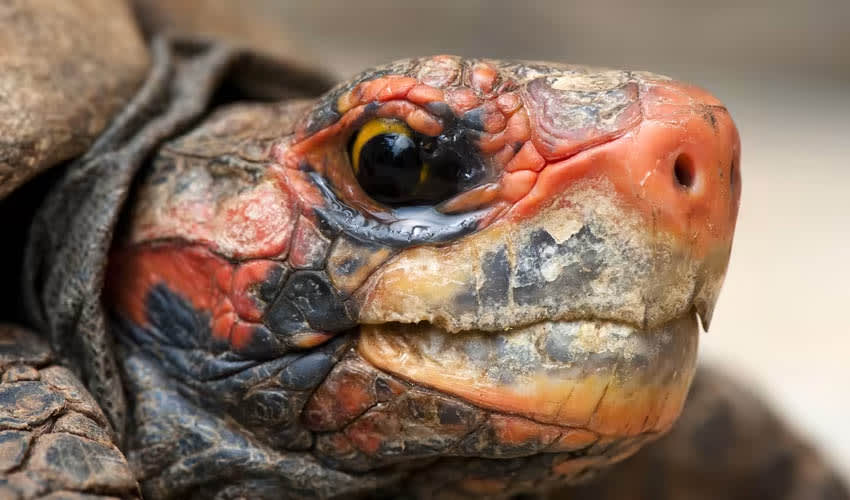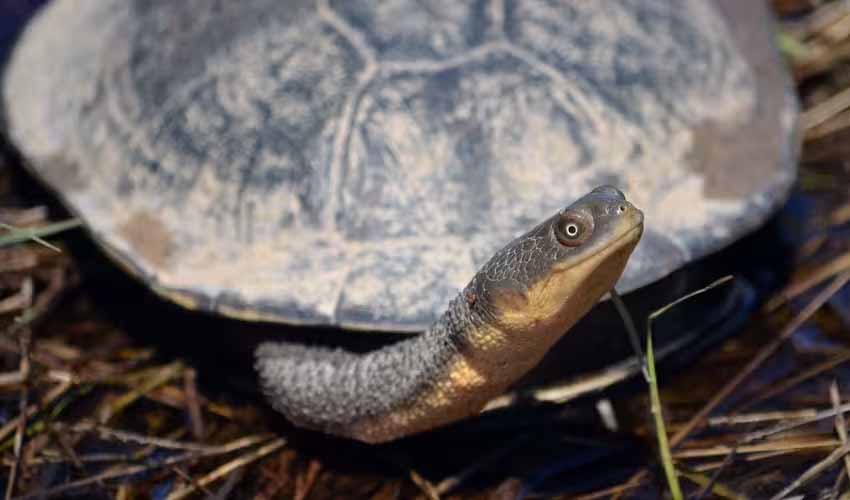Testudines – Turtles & tortoises
Famous for being slow, members of this order have evolved very little since they first appeared 200 million years ago
While colloquially, the term tortoise is used for land-dwelling species, terrapins for freshwater species, and turtles for marine ones freshwater, and marine species, zoologists generally refer to all members of this order simply as turtles.
The defining characteristic of Testudines is their unique carapace, or shell, which serves as both protection and structural support. This shell is formed by the fusion of some of the vertebrae and ribs, providing a sturdy shield against predators and environmental hazards. Tortoises, recognizable by their chunky feet and dome-shaped shells, are adapted for life on land, while sea turtles boast streamlined shells and powerful flippers for efficient swimming in the ocean.
In terms of diet, the preferences of Testudines vary depending on their habitat and lifestyle. Land-dwelling species, such as tortoises, are primarily herbivorous, feeding on a diet of vegetation with the occasional indulgence of insects or other small invertebrates. In contrast, aquatic species, including freshwater terrapins and marine turtles, have a more diverse diet, consuming insects, larvae, mollusks, jellyfish, seaweed, and aquatic plants.
Reproduction among Testudines typically involves laying eggs on land, with females seeking out suitable nesting sites to bury their clutches. Sea turtles, in particular, are renowned for their remarkable nesting behaviors, undertaking epic migrations spanning thousands of miles to return to the beaches where they were hatched. This extraordinary journey highlights the strong homing instinct and navigational abilities of these ancient reptiles.
Families in this order
Cryptodira – Hidden-necked
Closely related to Emydidae family, living in the Old World’s swamps and freshwater
The large and most diverse family of turtles, commonly known as the Marsh turtles
Small but bitey! They can capture anything that gets close enough to their powerful jaws
The largest of all living turtles and the heaviest non-crocodilian reptile, reaching lengths of up to 2 meters (6.5 ft)
The only exclusively land-dwelling turtles family
Spend their entire lives in seas where they breed, feed, and even sleep
The dinosaurs of turtle world are armed with spiked shell and beaklike jaws
Called “softshell” because their carapaces lack horny scales
Look at their fleshy snout and big nostrils, and you can see where they got their name!
Sole family members is one of the most endangered freshwater turtles on earth
Heads so large that cannot even be withdrawn into the shells
Pleurodira – Side-necked
Freshwater turtles native to sub-Saharan Africa
Efficient swimmers thanks to their round shells and shorter necks than other Pleurodira families
We fold our necks sideways, rather than pulling them straight back















